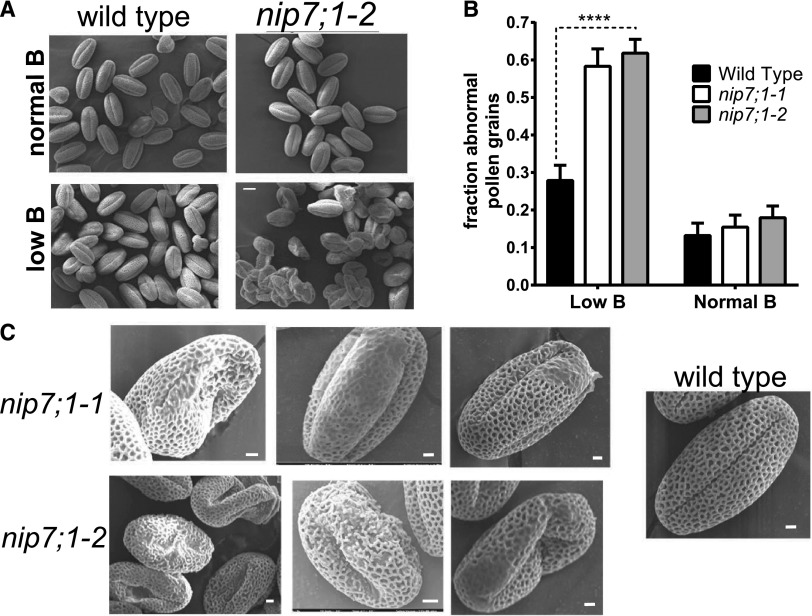Figure 8.
Morphology of wild-type and nip7;1 pollen. A, SEM comparison of mature pollen grains from wild-type and nip7;1-2 plants grown under normal (100 μm) and low (0.3 μm) boric acid. Bar = 10 µm. B, Analysis of the fraction of pollen grains exhibiting defective exine patterning or abnormal morphology under normal or low-boric acid conditions. The data represent the analysis of 200 to 300 pollen grains for each treatment, with the error bars representing the se. ****, P < 0.0001 from an unpaired Student’s t test of the data. C, SEM images showing representative defects of nip7;1-1 and nip7;1-2 pollen grains isolated from plants grown under low-boric acid conditions. For comparison, a wild-type pollen grain obtained under identical conditions (which shows normal morphology) is shown at right. Bars = 2 µm.

